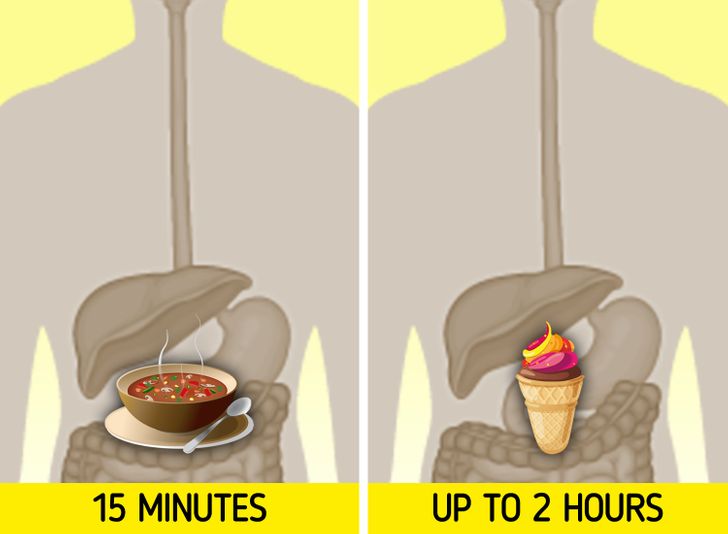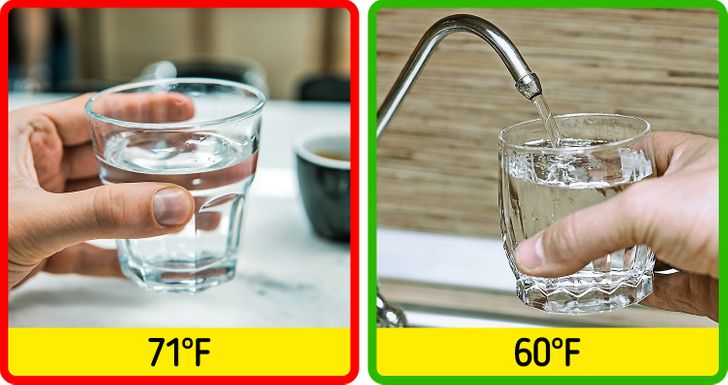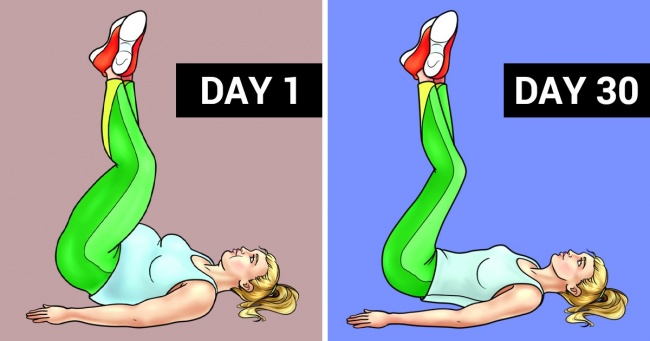Food is not just about taste and texture; the temperature of your meals can also have a significant impact on your health. From influencing calorie consumption and digestion to affecting your body temperature and satiety, hot and cold foods offer unique benefits and challenges. With growing interest in healthy eating, metabolism, and nutritional benefits, understanding the effects of food temperature is key to optimizing your diet for better health.
In this article, we explore six distinct ways that hot and cold food affects our body. Backed by expert insights and scientific research, these findings can help you make informed dietary choices. Whether you’re striving for weight management, better digestion, or improved nutritional intake, the temperature of your food may play a role in achieving your health goals.
Let’s dive into the science behind these intriguing effects and discover how modifying the temperature of your meals could enhance your overall well-being.
Those Who Choose Cold Meals Consume More Calories

Recent studies suggest that individuals who frequently opt for cold meals may end up consuming more calories compared to those who prefer hot meals. Several factors contribute to this phenomenon.
Understanding Caloric Intake and Food Temperature
Palatability and Portion Size: Cold foods are often served in larger portions or come with more added ingredients like dressings and condiments, which can increase the overall calorie count.
Temperature and Satiety: Cold meals may not trigger the same level of satiety signals as hot meals. Hot foods can stimulate digestive enzymes and hormones that help you feel full faster.
Metabolic Response: Some research indicates that the body may require extra energy to warm up cold food to body temperature, potentially increasing metabolism slightly; however, this energy expenditure does not necessarily compensate for the higher calorie intake.
For more on how meal temperature can influence caloric intake and weight management, check out Healthline’s insights on calorie consumption.
Our Body Has More Trouble Digesting Cold Food

Digestion is a complex process influenced by many factors, including the temperature of the food you eat. Cold food, in particular, can present certain challenges to the digestive system.
Why Cold Food May Slow Down Digestion
Enzyme Activity: Digestive enzymes work optimally at body temperature. When you consume cold food, these enzymes may not function as effectively, leading to slower digestion and potentially causing discomfort or bloating.
Muscle Contraction in the Gut: The gastrointestinal tract is sensitive to temperature changes. Cold food can lead to constriction of the blood vessels in the stomach and intestines, which might slow down the movement of food through the digestive system.
Impact on Nutrient Absorption: Reduced digestive efficiency means that your body may not absorb nutrients as well when you consume cold meals. Over time, this could affect overall health and energy levels.
For additional scientific perspectives on digestion and food temperature, visit Mayo Clinic’s digestion and metabolism resources.
Hot Food Tends To Be More Nutritional

Hot food not only warms your body but also plays a significant role in enhancing the nutritional value of your meals. Cooking food at higher temperatures can unlock flavors, improve texture, and sometimes increase the bioavailability of nutrients.
The Nutritional Advantages of Hot Food
Enhanced Nutrient Absorption: Cooking food can break down complex molecules, making it easier for your body to absorb vitamins and minerals. For instance, cooking tomatoes increases the availability of lycopene, a potent antioxidant linked to numerous health benefits.
Inactivation of Harmful Bacteria: Hot food is less likely to harbor harmful bacteria compared to cold food. This reduces the risk of foodborne illnesses and supports overall digestive health.
Improved Digestibility: Warm meals tend to be easier on the digestive system, reducing the strain on your stomach and intestines. The warmth can stimulate digestive enzyme production and promote better nutrient breakdown.
For more details on how cooking methods affect nutrition, see Medical News Today’s article on food and nutrition.
Cold Water Is Absorbed Faster Than Hot

Hydration is crucial for overall health, and the temperature of the water you drink can influence how quickly it is absorbed by your body. Studies suggest that cold water is absorbed faster than hot water, offering unique advantages for hydration.
The Science Behind Water Absorption and Temperature
Absorption Rate: Cold water, when ingested, is quickly absorbed by the body due to its lower temperature and density. This rapid absorption can be especially beneficial after exercise or during hot weather when your body needs immediate hydration.
Impact on Metabolism: Some experts argue that drinking cold water may slightly boost your metabolism as your body works to warm it to body temperature. However, this effect is minimal compared to overall hydration benefits.
Refreshing Effect: Cold water can be more refreshing and palatable, encouraging increased fluid intake throughout the day.
For more insights on hydration and water temperature, check out WebMD’s guide on the benefits of cold water.
Hot Food Keeps You Full For Longer

Satiety plays a crucial role in managing hunger and preventing overeating. Hot meals are often more satisfying and can help you feel full for longer periods compared to cold meals.
How Hot Food Enhances Satiety
Thermal Stimulation: Hot food stimulates the production of digestive enzymes and hormones, such as ghrelin and leptin, which regulate appetite and fullness. This thermal stimulation can lead to improved satiety signals and reduced snacking between meals.
Aromatic Appeal: The aroma of hot food can enhance the sensory experience of eating, making the meal more satisfying and reducing the desire to consume additional calories.
Digestive Comfort: Warm meals are generally easier on the digestive system, reducing discomfort and promoting a feeling of fullness. This can help prevent overeating and support weight management.
For more on the connection between food temperature and satiety, visit Verywell Fit’s nutritional insights.
Cold And Hot Food Can Increase Your Body Temperature

Both cold and hot foods have distinct effects on your body temperature, influencing your metabolism and overall energy expenditure. While hot food naturally raises body temperature, cold food can have a subtle, contrasting effect.
The Dual Impact of Food Temperature on Body Heat
Hot Food and Thermogenesis: Consuming hot meals increases your core body temperature, which can stimulate thermogenesis—the process by which the body burns calories to produce heat. This metabolic boost can enhance overall calorie expenditure and contribute to weight management.
Cold Food and the Body’s Response: When you eat cold food, your body works to bring the food up to body temperature. This process requires energy and can slightly increase your metabolic rate. However, the overall impact is generally less pronounced than that of hot food.
Balancing Act: Incorporating both hot and cold foods into your diet can help regulate your body temperature effectively, providing a balanced approach to metabolism and energy use throughout the day.
For further reading on how food temperature affects metabolism, explore Harvard Health Publishing’s articles on thermogenesis.
Integrating Temperature Awareness Into Your Daily Diet
Understanding how the temperature of your food affects your body is a powerful tool for optimizing your health. Here are some practical tips to help you integrate this knowledge into your daily routine:
Plan Your Meals Strategically: Consider alternating between hot and cold meals based on your activity level and digestive needs. For instance, enjoy a warm, nutrient-dense soup for lunch and a refreshing, light salad with cold ingredients for dinner.
Stay Hydrated with the Right Temperature: Adjust your water intake according to the weather and your physical activity. Cold water is ideal for quick hydration post-workout, while warm beverages like herbal teas can be soothing in cooler weather.
Listen to Your Body: Everyone’s digestive system is unique. Pay attention to how your body reacts to different temperatures and adjust your meal choices accordingly.
Combine Nutritional Benefits: Balance your meals to ensure you’re getting the right mix of nutrients. Hot foods can enhance nutrient absorption and satiety, while cold foods can offer refreshing, low-calorie options that keep you hydrated and energized.
By being mindful of how food temperature influences your metabolism and digestion, you can tailor your diet to support optimal health and weight management.
The Role of Food Temperature in a Holistic Health Strategy
Food temperature is just one aspect of a broader, holistic approach to nutrition and wellness. A well-rounded diet that considers portion sizes, macronutrient balance, and the nutritional quality of ingredients is essential for overall health. Combining these elements with an understanding of how hot and cold foods affect your body can lead to better dietary choices and improved long-term health outcomes.
Complementary Lifestyle Habits
Regular Physical Activity: Exercise boosts metabolism and supports overall well-being. Combining a balanced diet with regular physical activity can amplify the benefits of temperature-based meal planning.
Mindful Eating Practices: Paying attention to the sensory experience of eating—including the temperature, texture, and aroma of your food—can enhance satiety and prevent overeating.
Adequate Sleep and Stress Management: Both sleep and stress have profound impacts on digestion and metabolism. Ensure you’re getting enough rest and employing stress-relief techniques like meditation or yoga to support your overall health.
For additional insights on integrating holistic health strategies, visit WebMD’s wellness section.
Conclusion: Harnessing the Power of Food Temperature for Better Health
The temperature of your food is more than just a matter of personal preference—it has tangible effects on your digestion, calorie consumption, nutrient absorption, and overall metabolism. By understanding the six ways that hot and cold food affects your body, you can make more informed decisions about your diet and improve your long-term health.
Whether you’re aiming to reduce calorie intake, enhance satiety, or optimize nutrient absorption, integrating these insights into your daily routine can lead to significant benefits. From the enhanced metabolic boost of hot foods to the refreshing hydration offered by cold meals, the right balance of temperatures in your diet can make a real difference in your overall well-being.
Remember, every body is unique, and what works best for one person might not be ideal for another. Experiment with your meal temperatures, monitor how your body responds, and adjust your eating habits accordingly. With a balanced approach and the incorporation of holistic lifestyle practices, you can harness the power of food temperature to support your health goals.
For more research and expert opinions on nutrition and diet, be sure to explore reputable sources such as Mayo Clinic and Harvard Health Publishing. These resources provide valuable information on how various factors—including food temperature—can influence your overall health and metabolism.
Embrace the science behind hot and cold foods, and start making small, impactful changes to your diet today. By optimizing your meal temperature choices, you’re not only enhancing your nutritional intake but also taking a proactive step toward a healthier, more balanced lifestyle. Enjoy the journey to better health with every bite—whether it’s hot, cold, or somewhere in between.
Preview photo credit Depositphotos.com, Freeimages.com









Leave a Reply